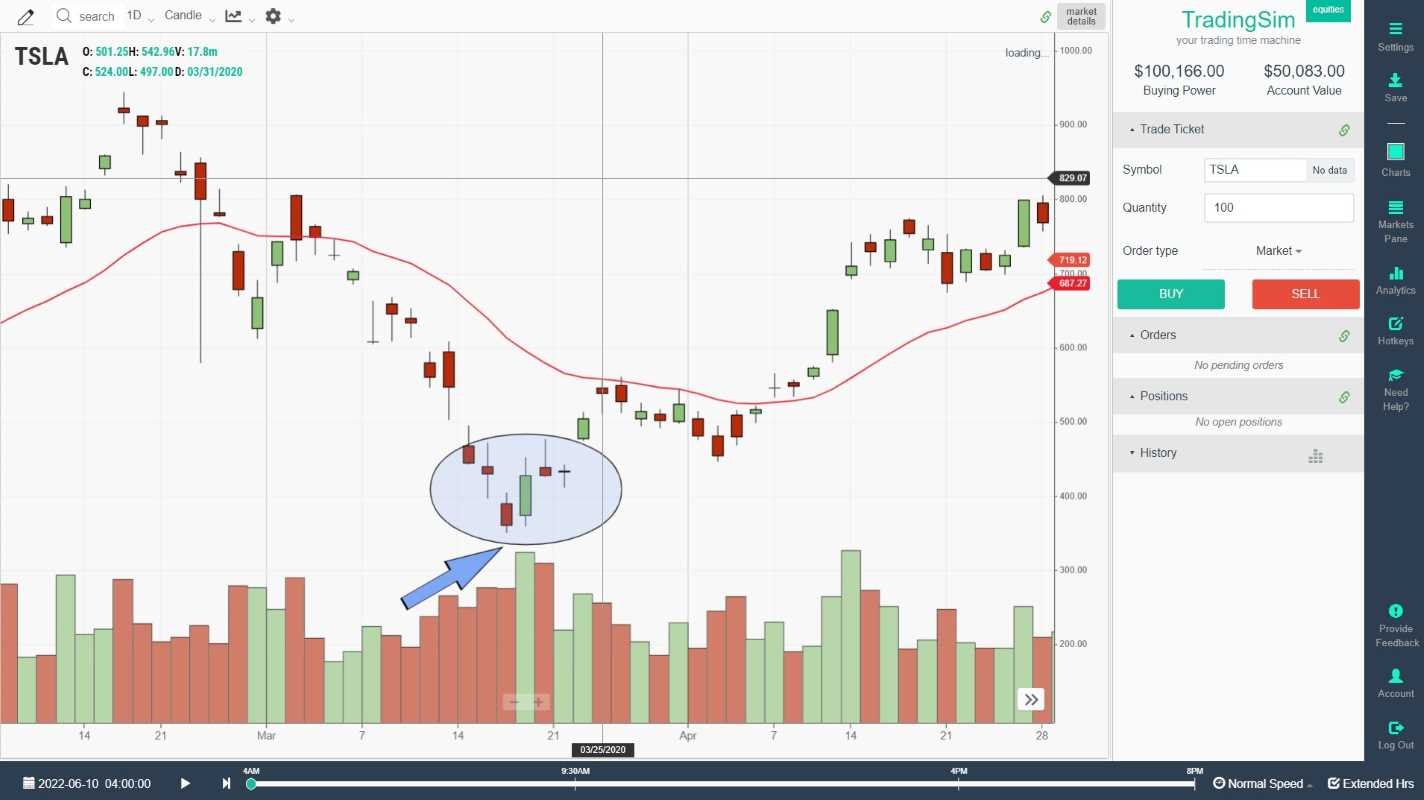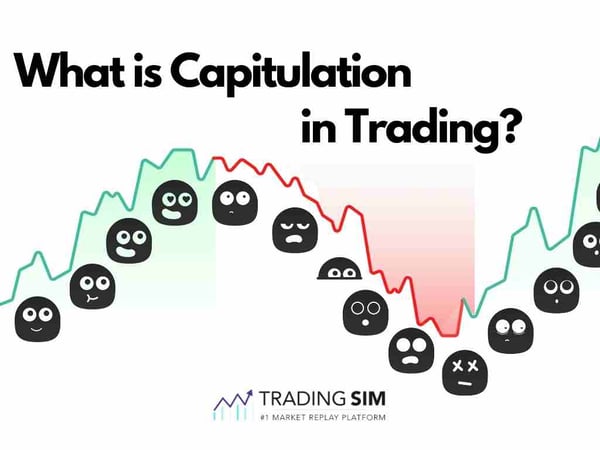The word capitulate means to give up or stop trying. It’s easy to see how this would apply to trading, especially considering the current market environment of 2022. In times of market volatility and negative sentiment, traders often wait for a period of capitulation to signal a bottom for the markets.
Market capitulation comes after a prolonged period of selling which pushes both individual stocks and the broader markets down lower. If investors were not selling, we would see more of a stable price level from the stock. However, in a period of capitulation, a sharp rise in selling pressure signals that a large number of investors have sold and have surrendered their position to a loss.
Is capitulation bullish?
Market capitulation can be either bullish or bearish in nature depending on the current market environment. Oftentimes, traders will use capitulation periods to get bullish on some stocks that have fallen significantly in price. Traders will then enter or re-enter a stock at lower price levels to try and ride the stock back up.
This is a popular contrarian trading strategy that works especially well in bear markets as traders seek out oversold stocks to buy low in hopes of a bounce. So in a way, the end of a capitulation period can be seen as a time to start feeling bullish again, or at least looking for bullish trading strategies like reversal patterns, inverse head and shoulders, etc. Of course, markets can always go lower, but when selling is exhausted it usually indicates a near-term bounce for the markets.
What is a flush in trading?
A flush for a stock will typically come at the end of a long capitulation period of selling. The flush is the final move downwards where the stock will finally find a near-term bottom. Traders target a stock or market flush as an ideal time to hop in and buy, since these areas are generally where markets will bounce back higher.
A flush is often seen as one of the closest things to timing the exact bottom of a stock’s downtrend. When a stock or market has a flush, it might just be a signal that the period of capitulation is coming to an end.

Who is buying when everyone is selling stock?
Contrarian traders are always on the lookout for market capitulation and market flushes. This strategy actually encapsulates two of the most famous investing quotes of all time: "buy low, sell high" and "be greedy when others are fearful." Being a contrarian often works well in efficient markets. If the entire market is acting bearish, then it might just be the perfect time to be bullish. Just be sure to wait for a good climactic signal or setup.
What is capitulation in crypto?
Capitulation in crypto is the same as with stocks and equities. In the crypto markets, capitulation can be more volatile since crypto assets trade 24 hours per day and seven days per week. Capitulation can send the crypto markets down in a hurry, particularly due to the amount of leverage that is used by crypto traders. Once capitulation gets some momentum, margin calls and liquidations will simply add to the snowball of crypto selling.
The crypto industry is filled with FUD or Fear Uncertainty and Doubt, as well as large emotional swings by traders due to the volatility. Once the negative sentiment of capitulation kicks in, it is difficult to reverse that trend. This is why the crypto market goes through prolonged periods of minimal price action called crypto winters. The last crypto winter lasted from January of 2018 to December of 2020.
Capitulation in Trading Summary
Capitulation means different things to different traders. The textbook definition of capitulation shows that traders have given up on the market and are selling their stocks at any price just to cut down on their losses. Capitulation is generally seen as the last leg down in a downtrend before a stock or market finds a bottom.
While it can serve as a stark reminder of how unforgiving the markets can be, it also provides contrarian traders with a window of opportunity. While everyone is selling their stocks, contrarian traders are looking to buy stocks at their lowest point. Although it isn’t a guarantee of a bottom, the end of the capitulation period is usually capped off with a flush, where a near-term bottom is then formed.








 Trading Strategies
Trading Strategies 
